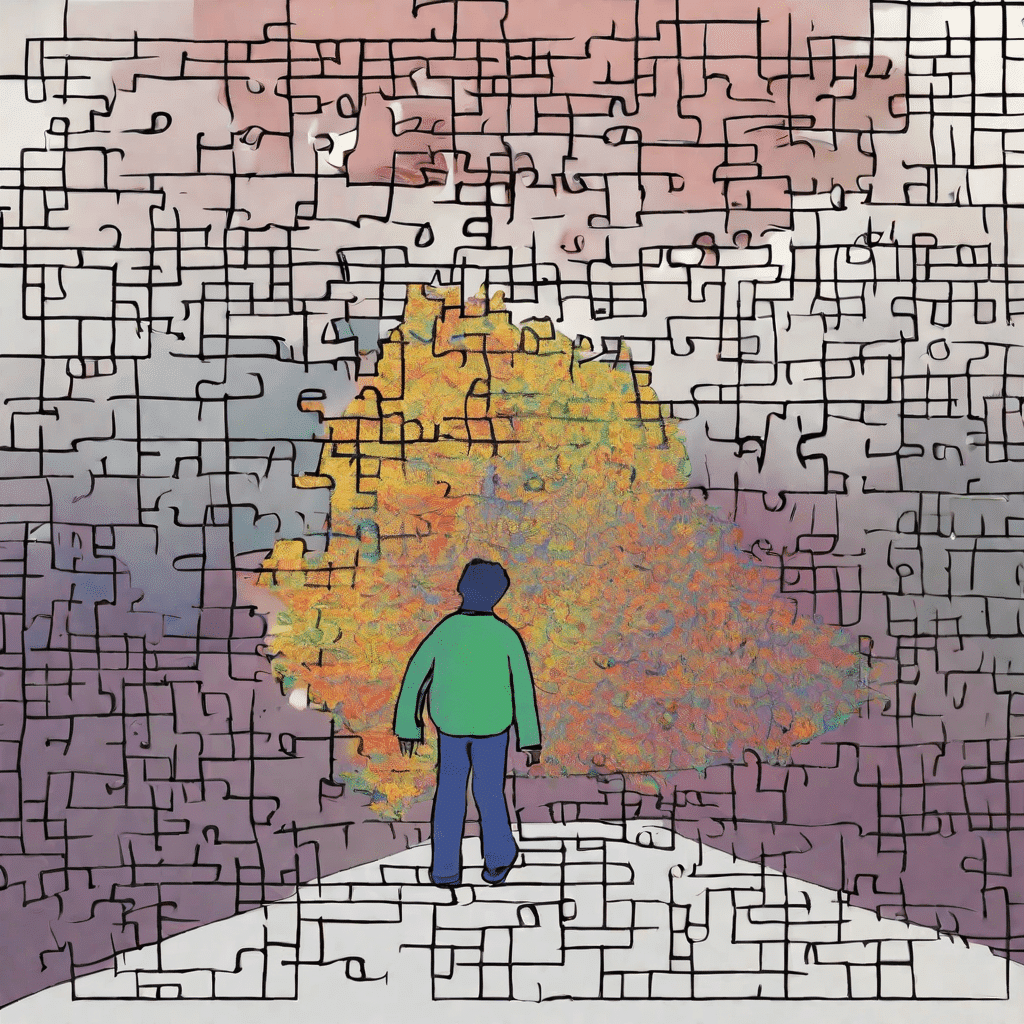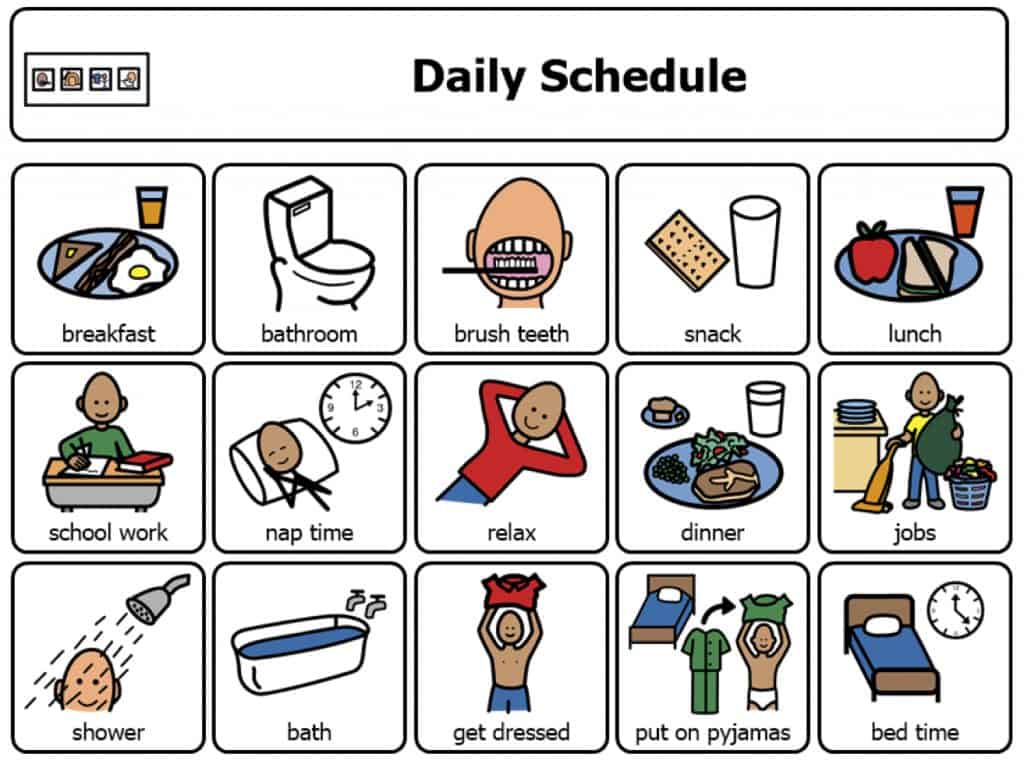Autism and Routine Changes: Why is it so difficult

Context setting on autism and its characteristics
For many autistic individuals, consistency is much more than comfort; it is a framework that enables them to navigate and make sense of the world around them.
Life often seems composed of a multitude of random and unpredictable events to autistic individuals.
By developing routines and sticking to them, they can impose order on this chaotic environment.
However, the question arises – why do routine changes pose such a significant challenge in autism?
Establishing the core relationship between autism and routine, along with a segue into the subject of routine changes
A firm grounding in the concept of routines is a consistent characteristic of those on the autism spectrum.
Routines provide predictability, which assists autistic individuals in comprehending their surroundings and managing their daily lives.
Unlike with neurotypical individuals, deviation from this predictable pattern isn’t just an inconvenience—it can prove to be a daunting, sometimes insurmountable, hurdle.
Explanation of why understanding this topic is crucial for both parents and professionals dealing with autistic individuals
Understanding how deeply routine discrepancies can affect autistic people is more than academic—it constitutes a fundamental part of caregiving, particularly for those new to it.
How we respond to these behavioral adjustments in daily routines can profoundly impact the feelings of safety and well-being in autistic individuals.
In unearthing the reasons behind why changes in routines are challenging for autistic individuals, we weave a thread of empathy and comprehension that validates their experiences while equipping ourselves better to navigate and support them.
Understanding Autism and Its Relationship with Routines

Autism, is a neurological and developmental condition that affects how a person perceives the world and interacts with others.
It is characterized by a range of characteristics such as issues with social interactions and communication, obsessive interests, and repetitive behaviors.
One frequently observed characteristic of autism is an aversion to routine disruption.
Detailed Definition of Autism and Its Key Characteristics
Explanation of how these characteristics affect an individual’s daily life
Autism typically manifests during early childhood, lasting throughout an individual’s life.
Although the characteristics vary significantly among individuals, key characteristics often include difficulties in communicating, socializing, and adjusting to unanticipated changes, often leading to stressful responses to even minor schedule adjustments.
Such sensitivities are often quite pronounced, leading to notable autism sensory changes.
Autistic individuals may experience sensory overload if their surroundings are altered or if their scheduled routines are interrupted.
The Importance of Routines for Autistic Individuals
Explanation of how routines provide structure and predictability for these individuals
Routines offer a predictable pattern that provides a sense of security and structure to autistic individuals.
This consistency caters to those on the autism spectrum living with heightened sensitivity to their environment and any disruption therein.
The structured approach helps manage autism routines, contributing to reduced anxiety and improved behavior.
Routines offer a framework within which autistic individuals can understand their world, providing them with a semblance of control and predictability.
Supporting examples and studies about the benefits of routines
Relevant studies have shown that adherence to routines contributes to autism schedule consistency, thereby fostering an environment wherein autistic individuals can thrive.
These routines range from daily activities such as meal times, hygiene routines, and bedtime, to weekly schedules involving school or therapeutic sessions.
What Happens When Routines Change
Description of the physical and psychological impact of routine changes
Autistic individuals are profoundly affected by routine transitions or disruptions.
Sudden changes can trigger stress, anxiety, and even meltdowns due to the overwhelming nature of the unexpected adjustments.
Autistic pattern transitions pose a significant challenge as the predictability that the routine once provided is now replaced by uncertainty, leading to the increased likelihood of anxiety-related behaviors.
Real-life examples of autistic individuals when their schedules are disrupted
Real-life examples demonstrate an increased display of distressed behaviors following any unexpected alteration in established routines, from major life events like shifting to a new home to seemingly insignificant changes like eating dinner at a different time.
Hence, understanding the psychology behind the resistance to change is pivotal in managing and creating strategies for routine transition in autism.
Why Routine Changes are Difficult for Autistic Individuals
Any change, much less changes to established routines, can be disconcerting, but it athletes an added level of complexity for those on the autism spectrum.
The discomfort and anxiety brought about by schedule adjustments not only highlights the importance of routine stability in autism but also demands a more in-depth exploration of the reasons behind this phenomenon.
Exploration of the Role that Routines Play in Feeling Safe and Secure
Psychological perspective on the importance of familiarity and predictability to autistic individuals
Psychologically speaking, routines provide a safety net for autistic individuals.
Embedded in predictability and familiarity, their routine provides a mental road-map for navigating everyday life.
Whether it’s a morning hygiene routine or a scheduled meal time, these activities afford a predictable linear sequence that provides comfort and reduces anxiety.
Interruptions in these routines consequently lead to restlessness, discomfort, and in severe instances, distressing episodes of meltdown.
Practical examples of this challenge
In practical terms, a predictable pattern for bedtime might mean going through a series of actions in a specified order every night.
If one aspect of this routine is changed, it could result in significant discomfort and inability to sleep.
This scenario underlines how essential routine stability is, and why autism routine disruptions could be overwhelmingly tricky.
Examination of the Heightened Sensitivity to Change Characteristic to Autistic Individuals
Medical perspective on the biological reasons for this heightened sensitivity
The complexity and variability of the disorder often result in a heightened sensitivity to change and sensory stimuli in autistic individuals.
The medical community suggests that this sensitiveness stems from neurobiological differences, causing autistic individuals to process sensory input differently than neurotypical individuals.
For example, in autistic pattern transitions, a minor change in the environment may be perceived as a major disruption, leading to an overwhelming sensory experience.
Real-life scenarios illustrating this sensitivity
Consider a scenario where a family decides to rearrange furniture in their house.
An act as simple and harmless as this could be perceived as a major sensory change by autistic individuals, causing significant distress and disorientation.
The Strain of Adaptability and Learning New Patterns
Explanation of the learning curve associated with new routines for autistic individuals
Tackling the challenge of adaptability and learning new routines necessitates an understanding of the difficulty of autistic routine shifts.
Given the reliance on routine for stability and predictability, any adjustment calls for the learning and adaption of new patterns, which can be disproportionately taxing for someone on the autism spectrum.
Case studies documenting these adaptability struggles
Case studies reveal that sudden changes in school or therapy sessions can result in increased anxiety and outbursts in autistic individuals.
This speaks to the complexity of managing autism routines, reflecting the need for cautious implementation of any changes in the pattern.
How to Navigate Routine Changes with Autistic Individuals

Managing routine changes for those on the autism spectrum is a task that requires care, patience, and finesse.
It is essential to understand the preconditions to changing routines, the specifics of introducing new patterns, and the potential role of professional support in this endeavor.
Preconditions to Changing Routines
Insights on when a routine change is necessary or unavoidable
Given the reliance of autistic individuals on routine and consistent schedule, changes to established routines should primarily be contemplated when necessary or unavoidable.
Some circumstances might make changes imperative, like a new school semester or the addition of a therapeutic session, which obviously interrupts the established autism schedule consistency.
In such cases or when a routine change is deemed beneficial for developmental progression, gradual implementation is key to ensuring that the shift doesn’t throw everything off kilter for the autistic person.
Description of gradual steps to introduce modifications to routines
For successful autistic pattern transition, changes should be introduced step by step, giving the individual ample time to adapt to each adjustment.
The goal is to maintain as much of the original routine as possible while incorporating the new changes, thus mitigating the potential shock instigated by an abrupt shift.
Strategies for Introducing Changes in Routines
Substantiated methods to manage and mitigate disruptions
There are specific evidence-based methods to help manage and mitigate routine disruptions in autism.
One effective technique involves using visual aids like calendars or charts to depict the upcoming changes.
This visual representation helps autistic individuals better grasp the upcoming changes, acting as a consistent reminder that can be referred back to as needed.
Success stories from individuals or families who have managed routine changes successfully
Personal anecdotes from families who have managed routine changes successfully offer invaluable insights. Many have highlighted the effectiveness of clear, consistent communication, patience, and allowing the individual to have some control over the aspects of the change whenever possible, in easing an autistic routine shift.
The Role of Professional Help in Managing Routine Changes
Explanation of how professional therapists can be beneficial in this process
Engaging professional therapists can be hugely beneficial in managing autism routine changes.
These professionals possess the required training and experience to understand the individual needs of the autistic person and tailor approaches accordingly.
In addition, they can provide practical techniques and strategies known to effectively aid in these transitions.
Sample scenarios of successful collaboration with professionals in introducing routine changes
There are numerous accounts of successful collaborations with professionals leading to smoother transitions.
For instance, in a school setting, incorporating a therapy session into a student’s routine was facilitated by an occupational therapist who gradually introduced the new activity through familiar, structured steps, therefore minimizing disruption.
Such scenarios underline the potential benefits of professional input in managing routine changes in autism.
Wrapping Up: Navigating Autism and Routine Changes
We’ve traversed a broad range of aspects concerning autism and routine changes, delving into the root of why autistic individuals often find changes to their routines unsettling.
We’ve underpinned the importance of these predictable patterns for an autistic individual, serving as a stable structure amidst an often chaotic and unpredictable world.
The integral role routines play in mitigating autism sensory changes, offering comfort and familiarity, cannot be overstated.
As a result, disruptions can trigger significant distress, underlining the need for cautious and thoughtful approach when dealing with autistic routine shifts.
We’ve also explored the heightened sensitivity to change characteristic of autistic individuals, discussing the intricate combination of psychological and biological factors that contribute to this heightened response.
As each person’s autism is unique, their reaction to changes will also be unique, thereby emphasizing the importance of tailoring strategies and interventions to individual needs.
Finally, we probed into the strategies that can be utilized in managing routine disruptions constructively.
Be it visual aids or professional guidance, nuanced and patient introduction of changes is salient.
Stories of families and caregivers who have navigated these waters successfully provide both inspiration and insight.
The path of navigating routine changes with autistic individuals is not without its unique set of challenges, but with understanding, patience, and appropriate tools, such transformations can be managed.
As caregivers, parents, educators, or therapists, it is on us to approach the necessary changes in routine with sensitivity and mindfulness.
It is crucial to remember that love, understanding, and a patient demeanor are the fundamental pillars that will support these individuals as they take brave steps towards embracing change.
